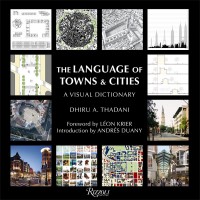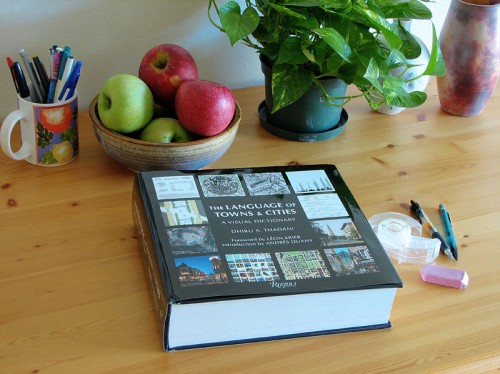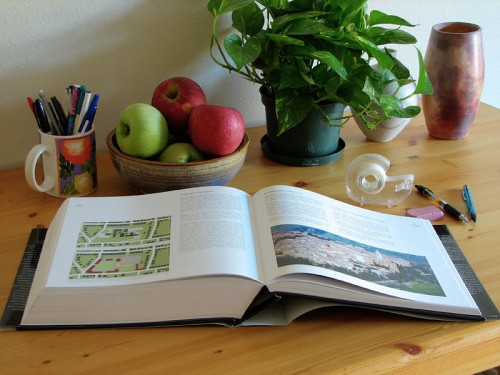 I’m very pleased to say The Language of Towns & Cities: A Visual Dictionary has been published and is available for purchase. The massive tome was written by Dhiru Thadani with more than fifty contributors. I was the editor of the book as well as a contributor.
I’m very pleased to say The Language of Towns & Cities: A Visual Dictionary has been published and is available for purchase. The massive tome was written by Dhiru Thadani with more than fifty contributors. I was the editor of the book as well as a contributor.
My leading observation is that the title is a misnomer. It’s not a visual dictionary, it’s a visual encyclopedia — a combination of reference book and coffee table book. It represents about 15 years of creative production by Dhiru, including his maps of urban spaces around the world and his insights from 30 years as an architect and town planner. Numbers also tell the tale: the book consists of 804 pages; more than 500 subject matter entries ranging from single paragraphs to full essays; and more than 2,500 diagrams, illustrations, and photographs.
The book is physically heavy and bulky. Its dimensions are 10.4″ x 10.4″ x 2.75″ and it weighs 9 pounds… not what you would call a portable book. Once it gets parked on a desk or coffee table, it’s not going to move far.
The Language of Towns & Cities is a fine example of the craft of bookmaking. Credit is due to Rizzoli Publications and the Chinese firm that manufactured the book. It is beautifully printed
, with heavy coated paper stock that showcases the vibrant, lush photography. The binding is sturdy and lies flat at any page, which many books these days are not made to do.
The authorial tone of the book is accessible and straightforward, aiming for clarity rather than obfuscation by jargon. Indeed, The Language of Towns & Cities is a work of anti-jargon, because it introduces concepts, defines terms, explores patterns, and reveals history.
Being an encyclopedia, The Language of Towns & Cities is arranged alphabetically. Rob Krier’s review on Amazon.com describes his childhood joy at browsing reference works. Krier says that reading Language made him feel the same way. Each flip of the page brought a different subject into view, encouraging serendipitous exploration and discovery.
To sum up, Language combines beautiful images, a wide variety of subject matter, accessible writing, and fine bookmaking. I call it the ultimate browsing book on urban design.
What follows is the dust jacket book description, list of contributors, and a sample from the book including the complete table of contents.


